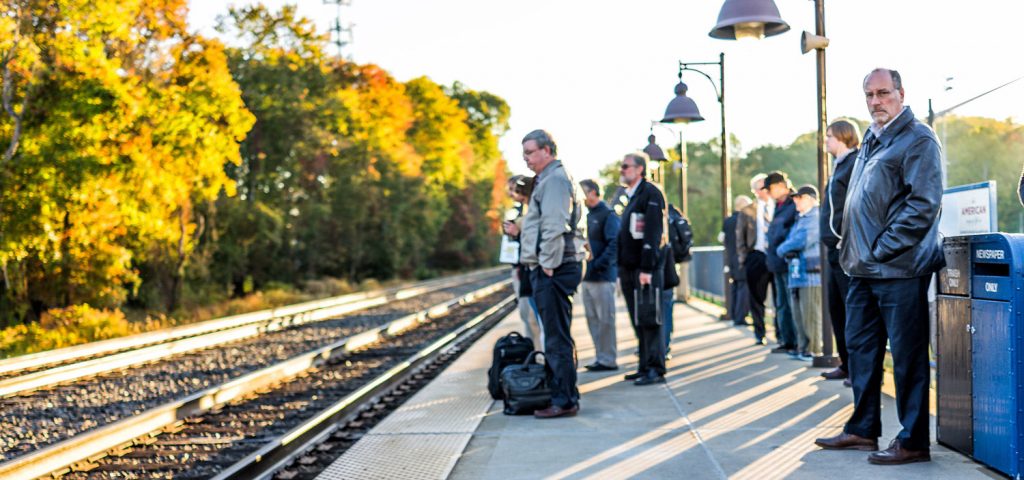Build transit back better with more trains, more buses, more frequency
As more Americans begin returning to work and daily life, we need transit to be there, running reliably and frequently, getting us where we need to go. There’s an exciting new proposal to fund increased transit service across the country, but time is short to build support for this important legislation.
While the INVEST 2.0 awaits a vote by the full House later this month, there are ongoing efforts to make further improvements to that already strong bill. Rep. Hank Johnson’s (GA) Stronger Communities through Better Transit Act is a must-have bill that would produce higher quality transit in communities of all sizes across the country. This vital piece of legislation would create a new program to fund transit operations costs, available to all transit agencies, rural and urban, in order to:
- Increase service frequency so that people don’t have to wait so long for the bus;
- provide additional hours of service so that those who don’t work white-collar hours can still get to their jobs; and
- add new, frequent service to underserved communities in the region.
We have a tremendous chance to build an engine for equitable economic growth across the country through more robust transit service and systems. The more support this bill gets, the more likely that House leadership will include it in whatever final transportation and infrastructure product they consider later this month.
Why we need more funding for operating transit
For decades, not only has transit gotten only 20 percent of federal transportation funding, but that funding has been limited by Congress to only maintenance and capital needs—not the day-to-day costs of running trains and buses. This moratorium was lifted for rural transit agencies in 1998, though it’s not a big benefit to rural transit agencies to make them choose whether to fund existing service or develop additional service with their limited funds. They don’t need flexibility: they need more robust funding. Beyond these rural agencies, large and mid-sized agencies still do not receive any operating funds, which make up two-thirds of public transportation’s costs.
This has to change in order to create the equitable and sustainable transportation system necessary to connect everyone to opportunities.
It wasn’t always like this. In the 1970s and 1980s, the federal government matched as much as $1 of operating assistance to transit agencies for every $2.25 provided by local and state governments, as we wrote with partners in this report. The current federal focus on only capital needs instead of providing quality service, leads many transit agencies towards spending “large quantities of federal funds upgrading or extending a handful of routes while neglecting the broader network of service,” and as a result, “ridership stagnates or shrinks.” In fact, following the stimulus bill in 2009, numerous transit agencies received money to buy new buses or railcars at the same time they were cutting service and laying off employees because of the Great Recession, putting many agencies in the ludicrous position of having tons of money to buy vehicles they could not afford to operate.
All Americans—no matter where they live—deserve transportation options that are convenient, affordable, sustainable and safe. But this arcane policy makes it an uphill climb for transit agencies to deliver that kind of service. In fact, fewer than 10 percent of Americans live within walking distance of transit that runs every 15 minutes or less, TransitCenter found.
The lack of operating support for public transit—and the severe underfunding of transit in general—also doesn’t impact everyone equally. People of color make up 60 percent of transit riders. Of that, 24 percent are Black Americans. In addition, 19 percent of Black households have no access to a vehicle, compared to 9 percent of households nationally with no vehicle access.
“A transit system that truly works has to be frequent and reliable,” said former Transportation Secretary Rodney Slater in a recent op-ed. “People should be able to depend on a bus coming every 10 minutes, no matter where in the country they live.”
Imagine a United States where every community has convenient, reliable, frequent transit service that can safely and conveniently get you to work, school, shopping, church or anywhere else you need to go; where you don’t need to spend thousands of dollars per year owning and operating a car if you don’t want to or can’t afford to. Putting millions more Americans within reach of frequent transit service is possible, and Rep. Johnson’s bill is our best opportunity to start to realize that vision.
Use the form above to tell your representative to support this bill.
Ed. note: the second half of this post was adapted from this related post we wrote back in May.






















9 Comments